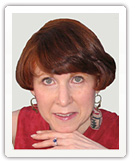e-Tips
How to Be a “Best Place to Work”
Many of us have an intuitive sense about what makes a "best place to work." Various surveys track what employees are looking for to join and stay, and those items shift in rank from generation to generation depending on existing social, political and economic circumstances.
An ever increasing number of publications and organizations including, Forbes, Fortune, Diversity, City local magazines and AARP to name a few, sponsor and award “best places to work” designations overall or by industry or specific category. The awards are based on a statistical analysis of internal surveys and benefits offered by organizations of all sizes.
The Center for Companies That Care has been recognizing a selected group of for-profit and not-for-profit organizations, privately and publicly owned for 12 years. The Center recently announced its 12th Honor Roll. Marci Koblenz, Center for Companies That Care's co-founder and president, said at the time of the announcement:
"It's impossible to quantify the full impact of these outstanding employers. They are helping their more than 83,000 employees thrive with such workplace practices as transparent communication, appreciation for employees' work, ethical and respectful behavior, and fair compensation and benefits programs. We have heard from many how their employee engagement has increased from year to year. We know engaged employees produce better results and more satisfied customers. The volunteerism initiatives of the Honor Roll help communities prosper. They are role models." (See the Center’s 10 Characteristics of Socially Responsible Employers.)
Despite all the “Best Places to Work” award givers cropping up, it is still very difficult to find organizations that are tracking metrics that correlate directly with increases in profits. We hope to see more efforts to document the financial benefits we hear about anecdotally and comprise the business case for stronger actions to be a “best places to work.”
In the summaries of why each winner was chosen, characteristics that have strong appeal to the younger generations dominated: opportunity, training and coaching, mentoring, fun, transparency, and relationships with the senior people. The highlighted perks were not largely financial, and only one organization – Goldman Sachs – was on a winners list because of compensation. (It was so above and beyond any other in that respect.)
In the words of Don Knauss, CEO of Clorox Company (in an unrelated interview): “if you’re going to engage the best and the brightest and retain them, they’d better think that you care more about them than you care about yourself.”
If your organization would like to join the ranks of great places to work and attract and retain the top work force, I've compiled the winning ingredients (in no particular rank order) for your guidance:
- A clear mission that attracts and retains people who believe in what the organization does and feel their work is meaningful.
- A meritocracy with training, coaching and well-defined career paths.
- Open communications among all levels, especially in times of change (growth or shrinkage).
- Opportunities to work and develop relationships with senior people.
- Cultures that discourage workaholism
- Philosophy of "treat them the way you want them to treat clients."
- A business that "has a soul," demonstrated in pro bono work and incentive to do public interest work.
- Non-financial recognition widely conveyed internally.
- Career opportunities to branch out to other functions in the organization.
- Focus on promotions from within.
What do you think of the list? How many of these ingredients are integral to your organization?
Please continue to send your thoughts, comments and stories my way to pwhaserot@pdcounsel.com or post on the Cross-Generational Conversation group on LinkedIn.
Phyllis
© Phyllis Weiss Haserot, 2014. All rights reserved.
* The generational chronology for easy reference: Generations are defined by the similar formative influences – social, cultural, political, economic – that existed as the individuals of particular birth cohorts were growing up. Given that premise, the age breakdowns for each of the four generations currently in the workplace are approximately:
Traditionalists: born 1925-1942
Baby Boomers born 1943-1962
Generation X born 1963-1978
Generation Y/Millennials born 1979-1998
____________________________________________________________________
Struggling with how to achieve vital knowledge transfer among the generations? Ask about our workshop “Avoiding the Cliff: the Human Side of Succession Planning and Knowledge Transfer.” We also provide *Next Generation, Next Destination* succession and transitioning planning programs and services for baby boomer senior professionals and their firms.For coaching, training and special programs on inter-generational challenges for and among 4 generations in the workplace, attracting and retaining clients and employees of different generations, and maximizing the potential of young professionals and work teams, call or email Phyllis for an exploratory talk or complimentary coaching session at 212-593-1549 or pwhaserot@pdcounsel.com. Ask about our signature program *Frontrunner 5.”
Phyllis is available to speak at your organization or at firm retreats on inter-generational relations and organizational effectiveness topics. Call or e-mail for a list of topics or to custom-tailor your own.

